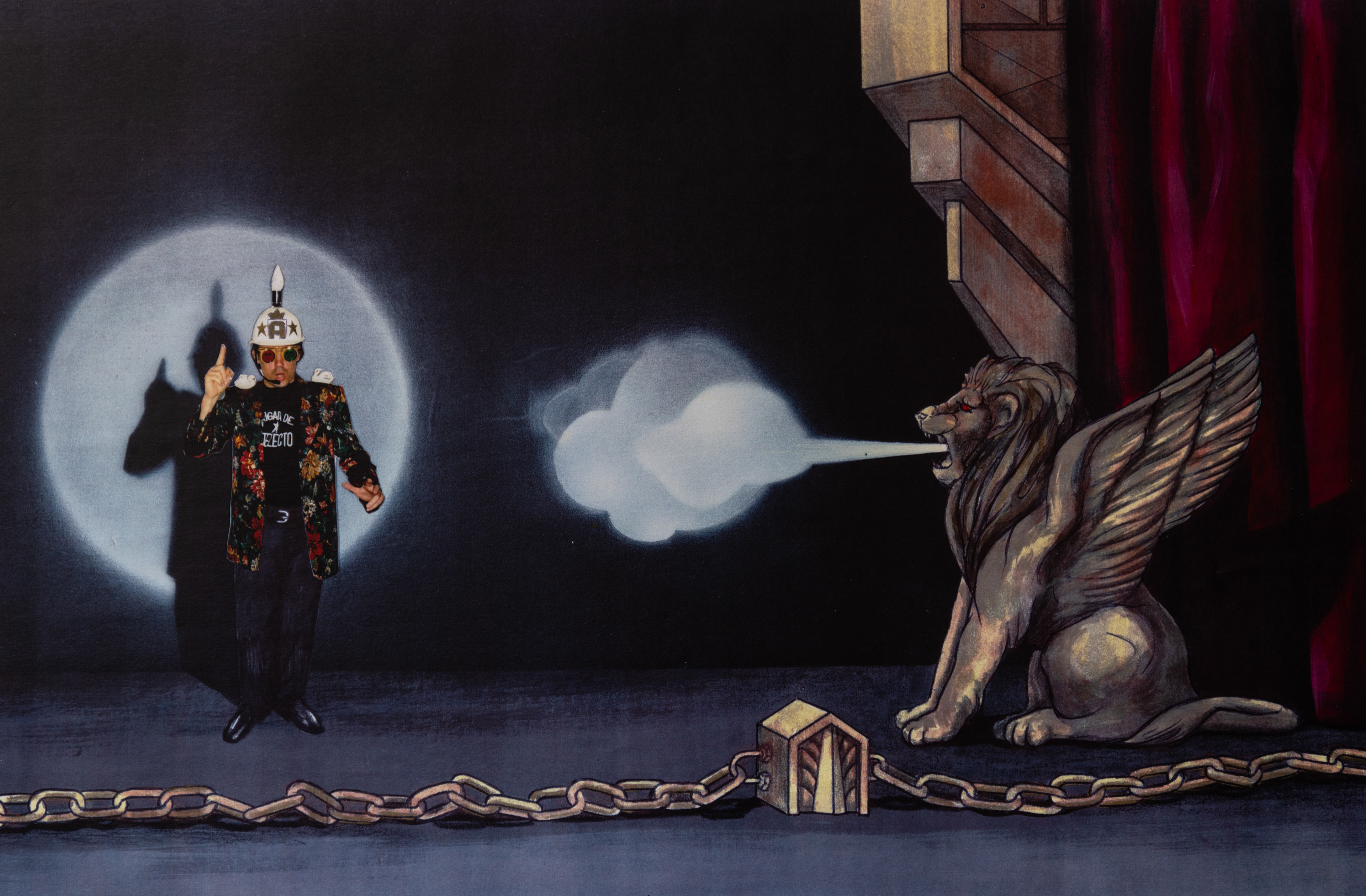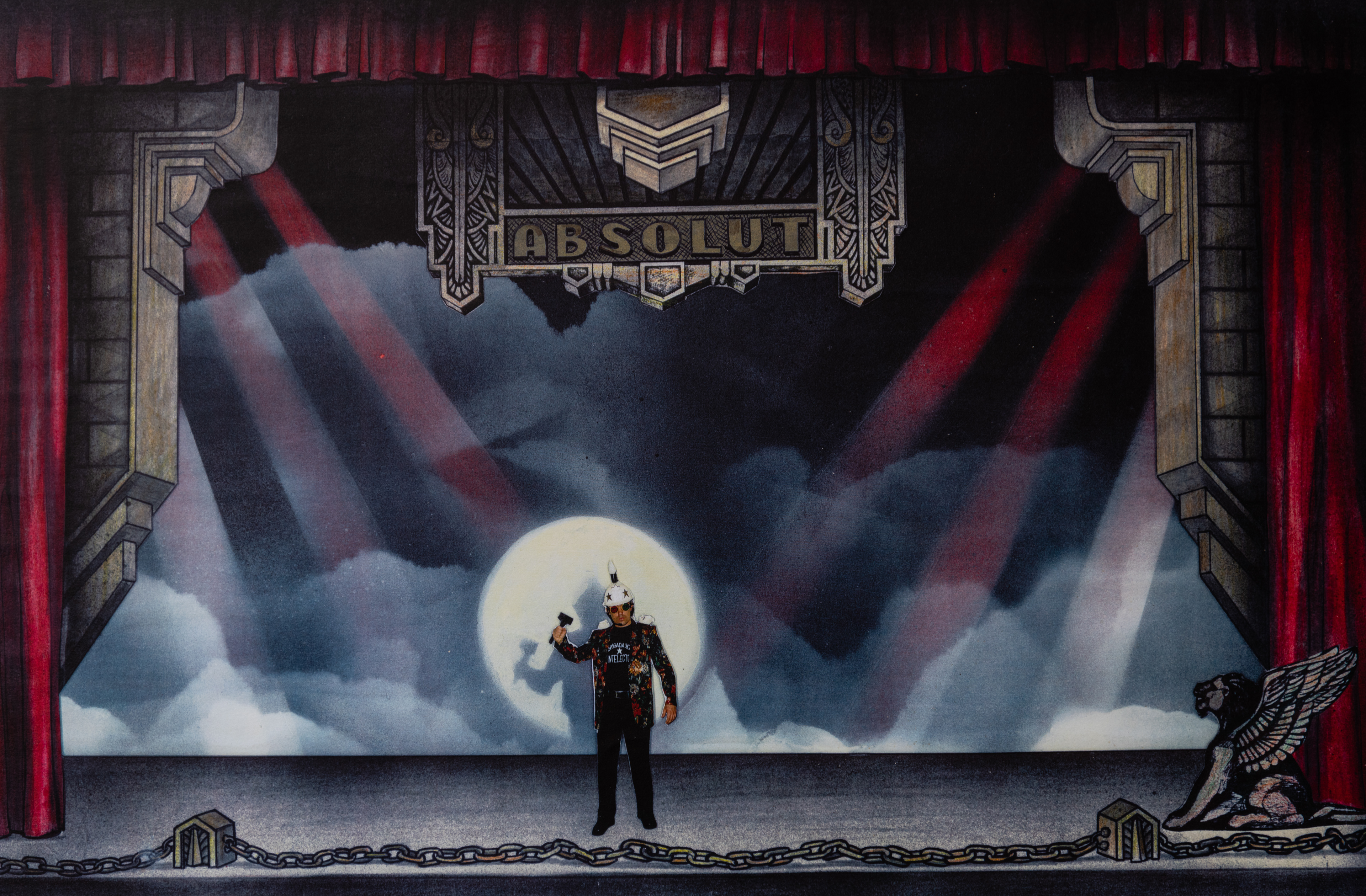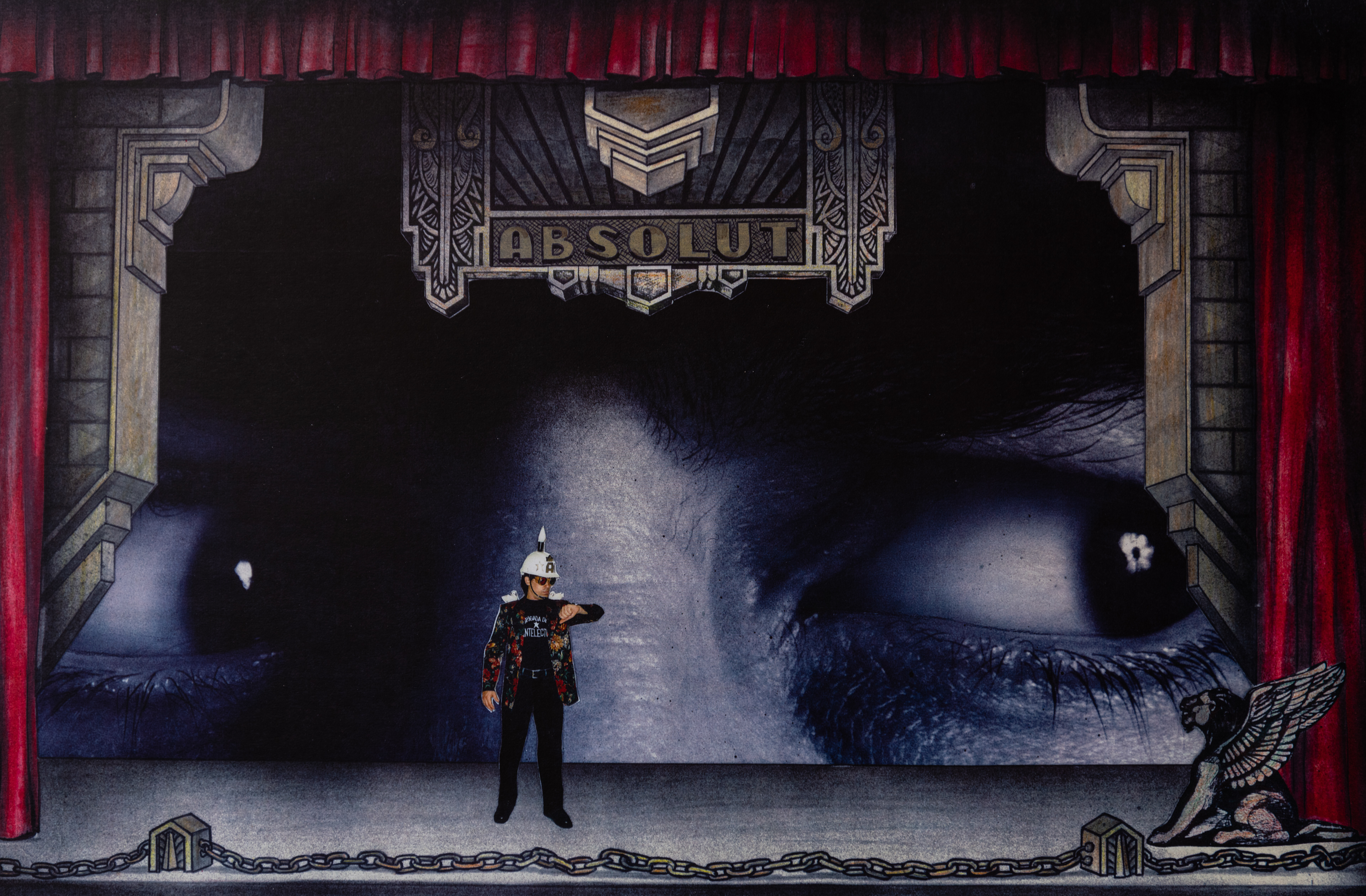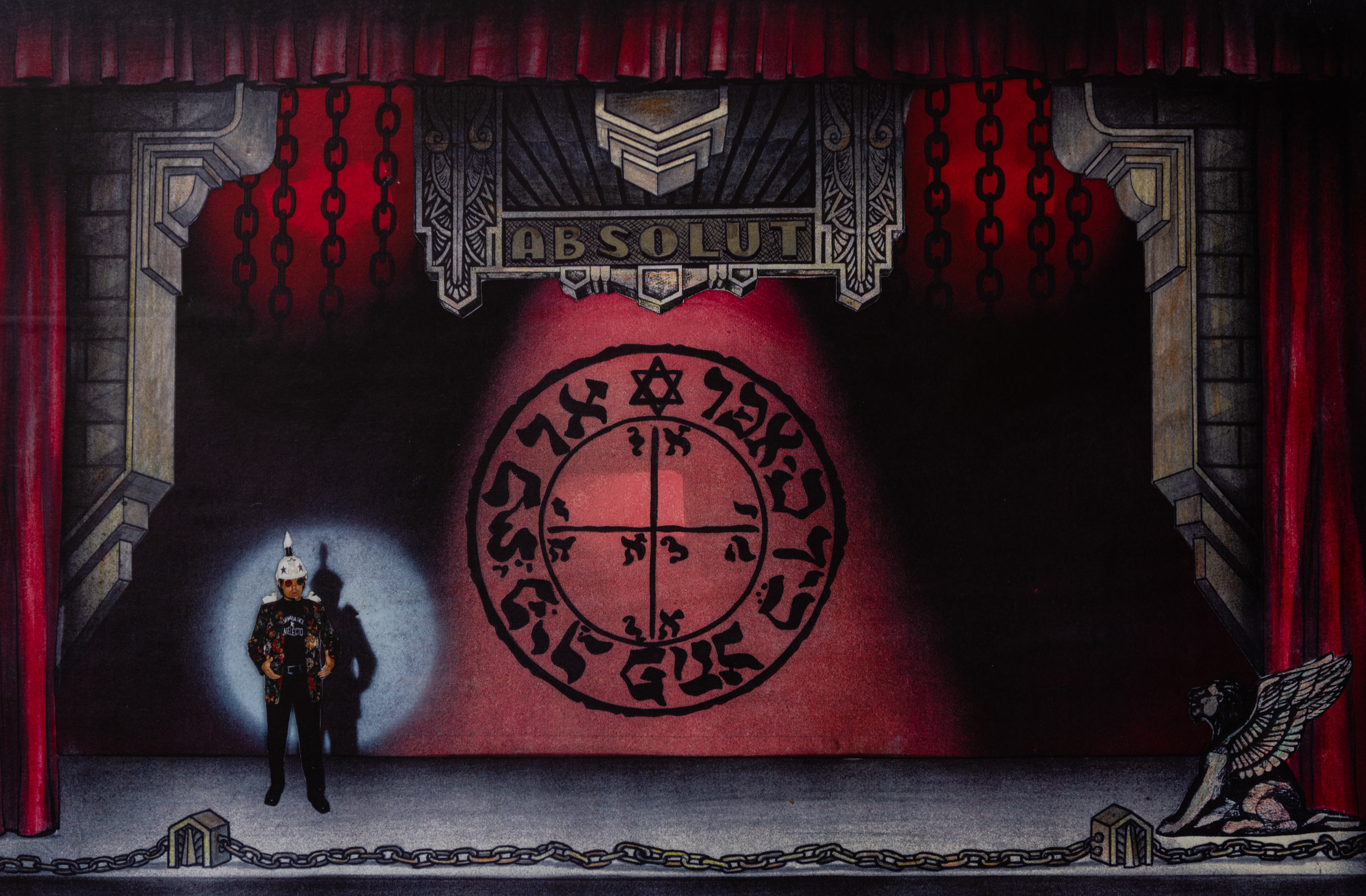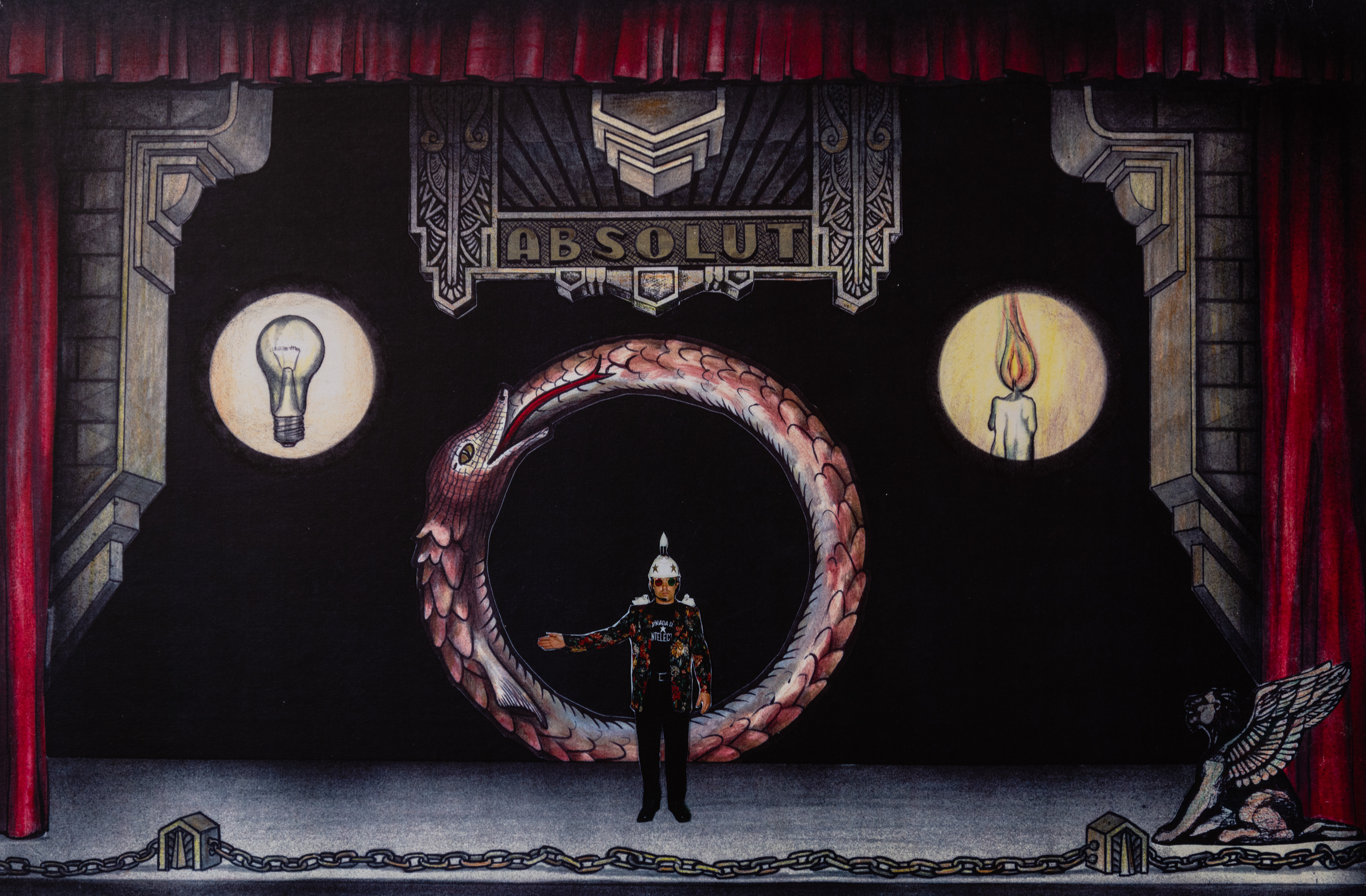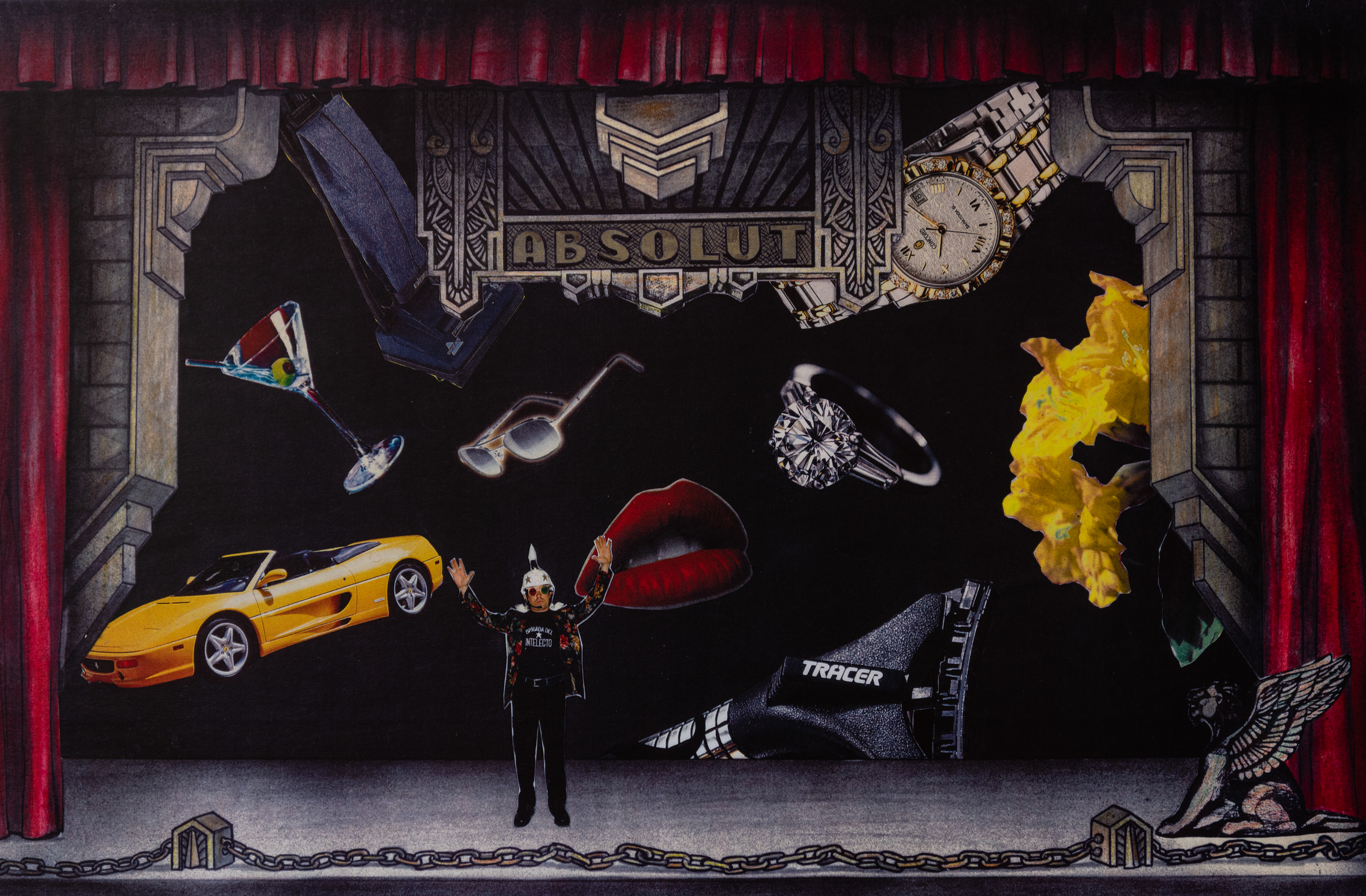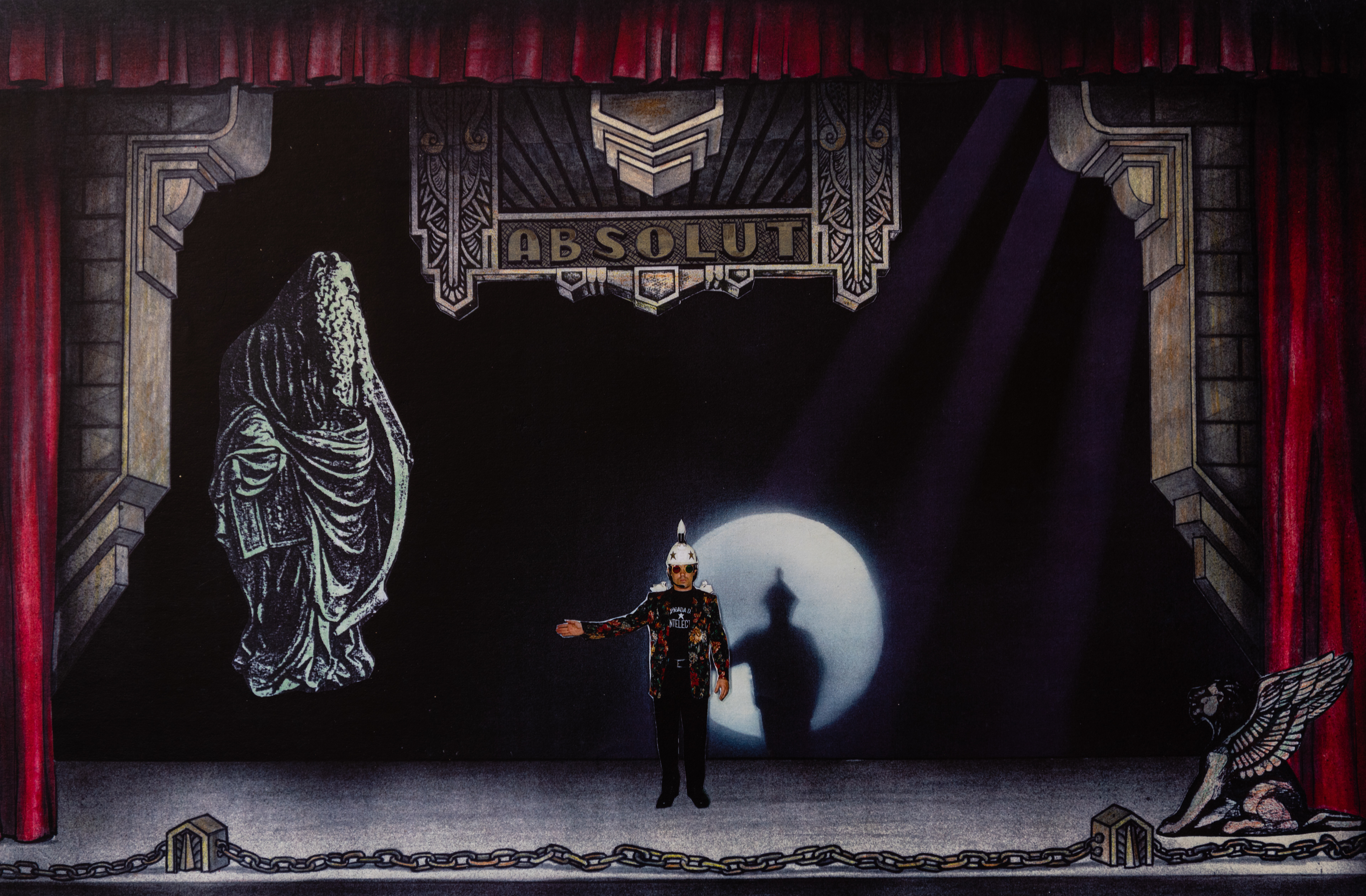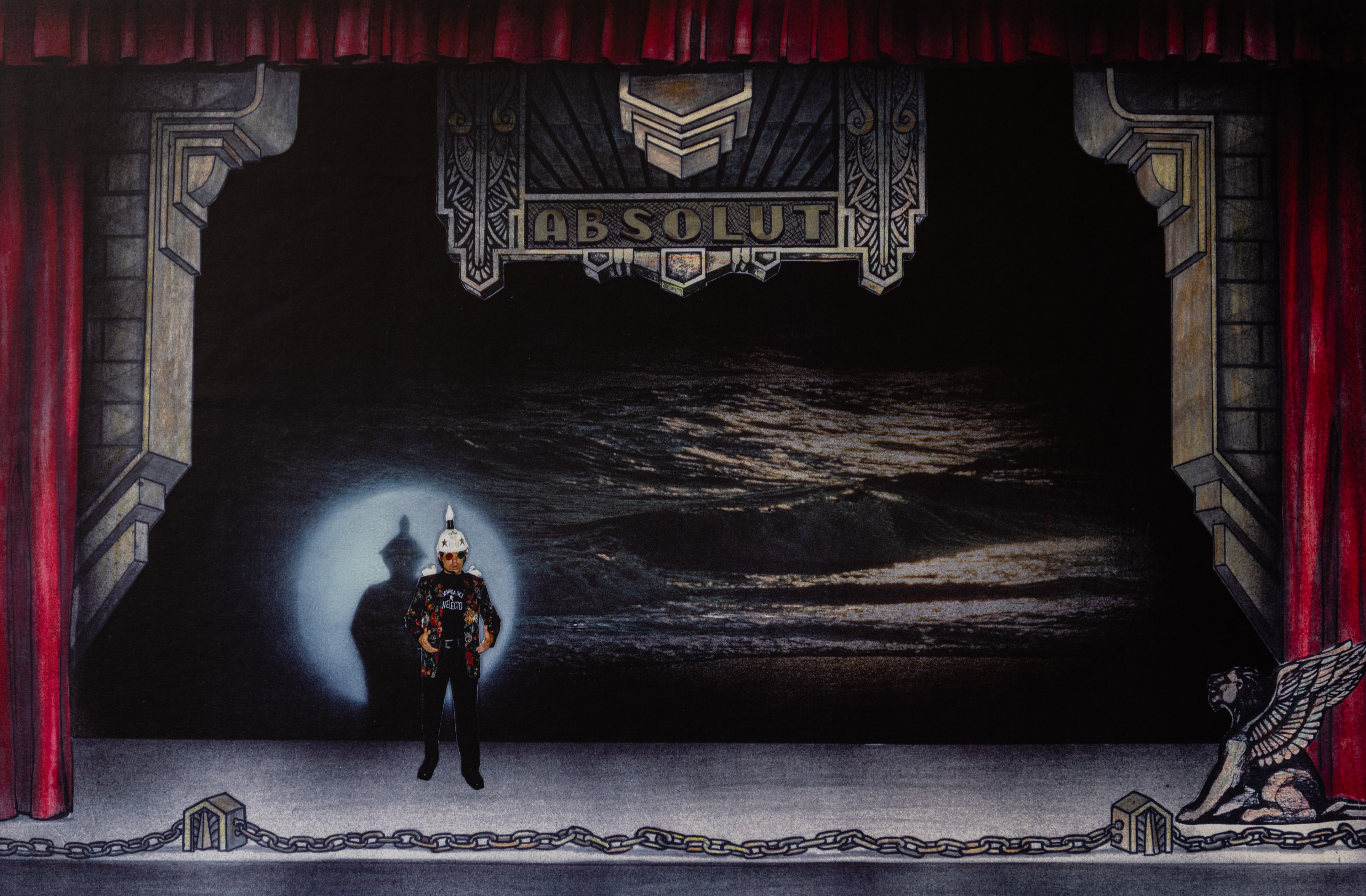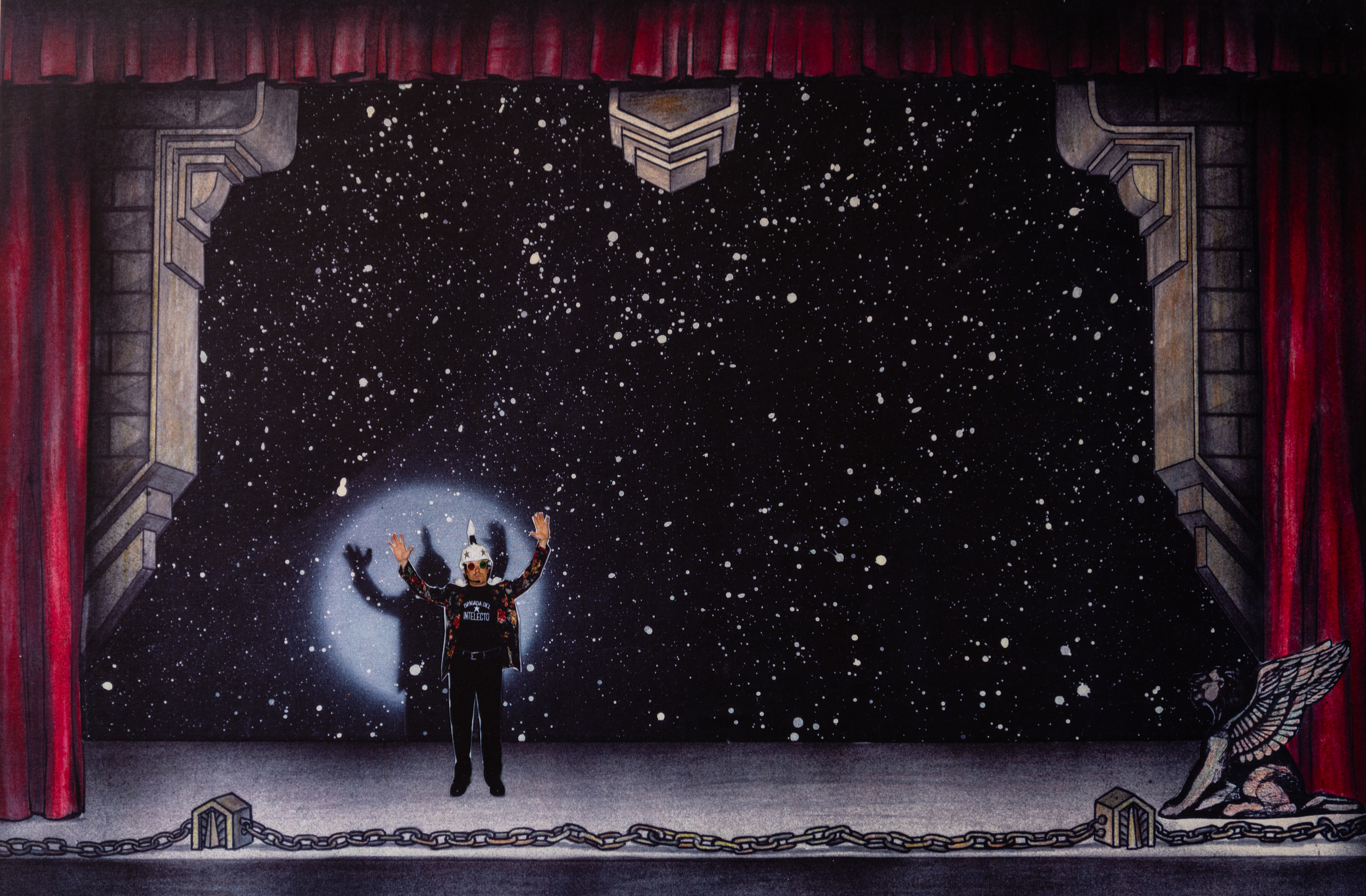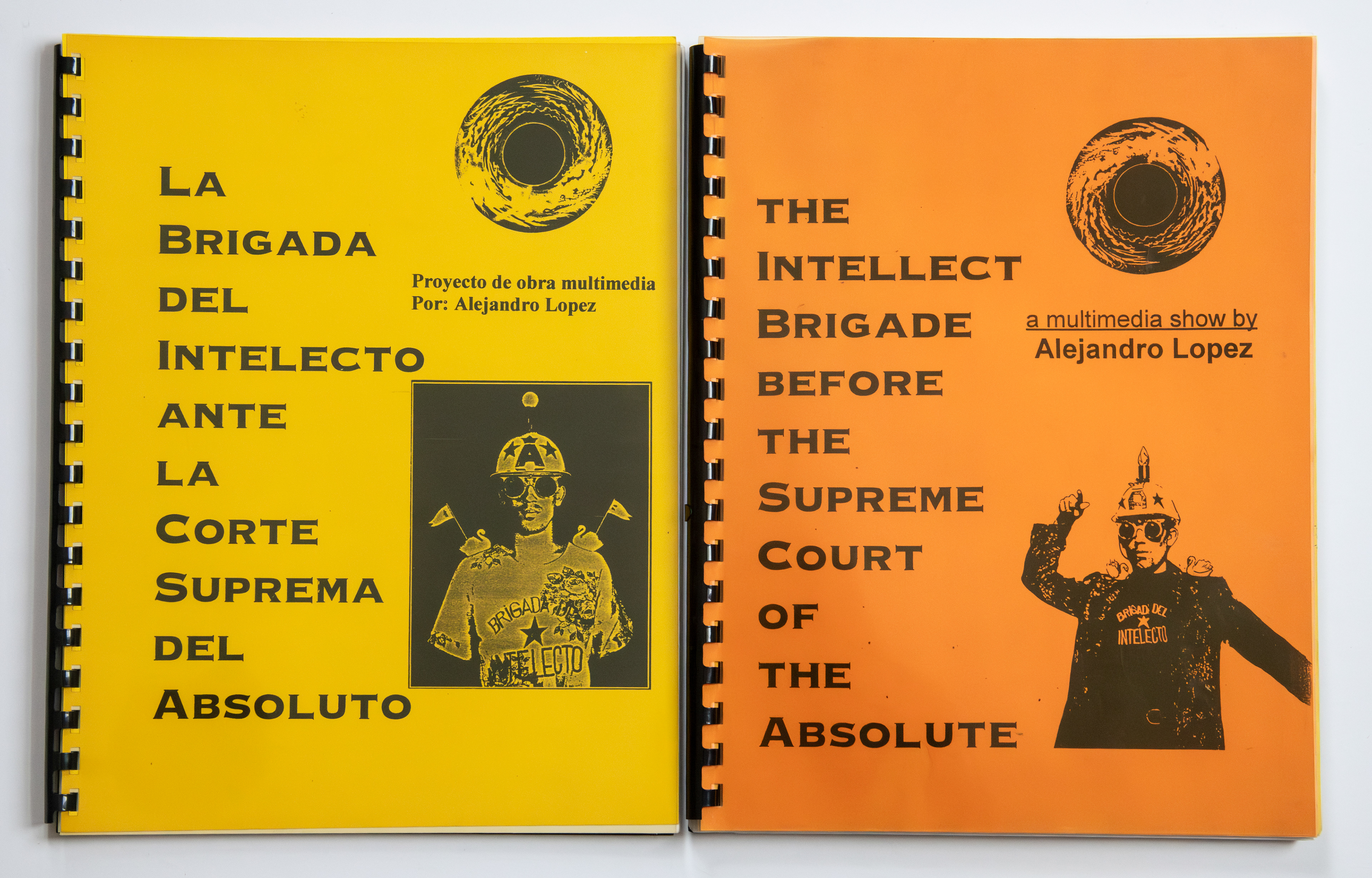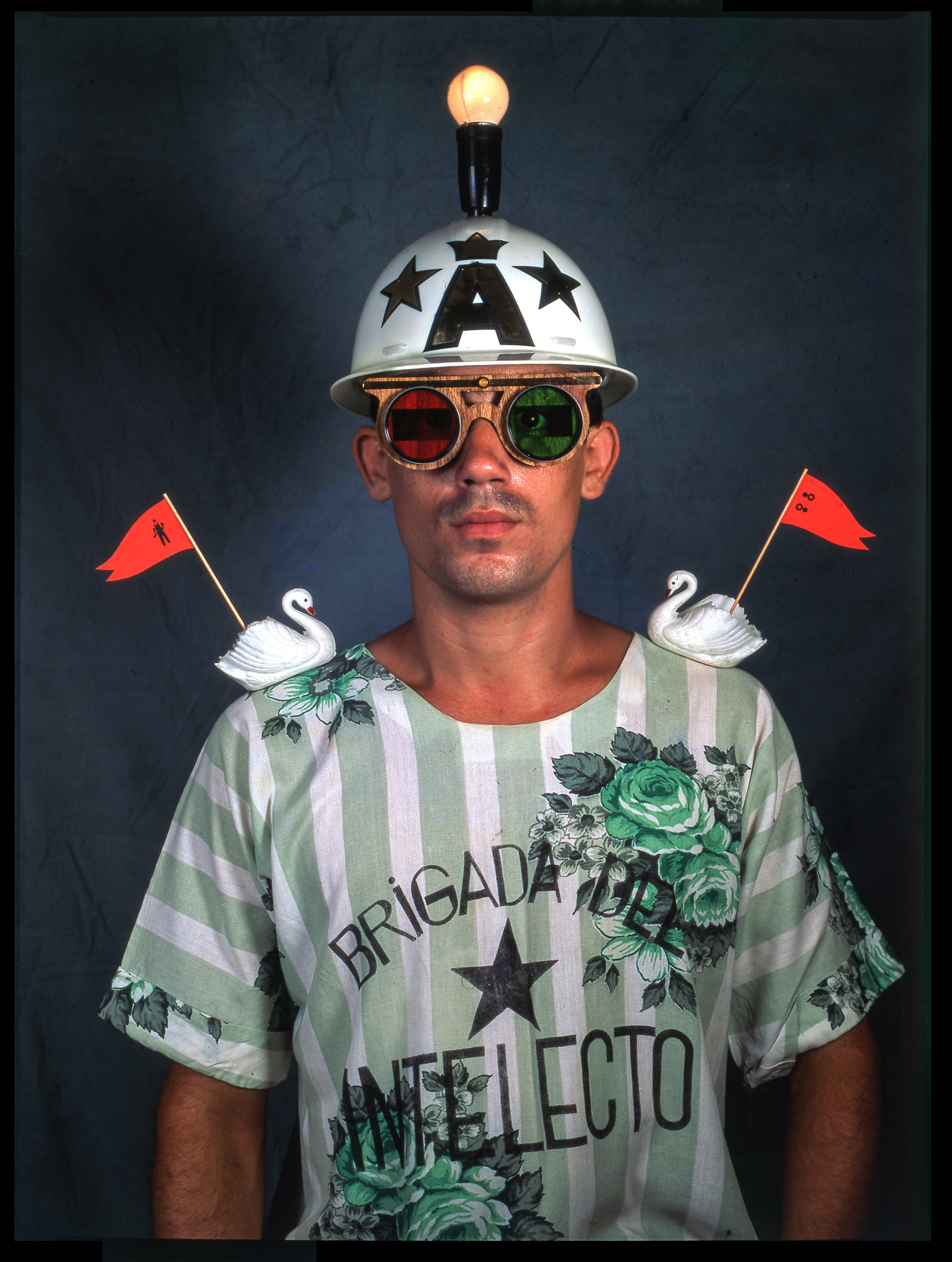In the year 1992 I presented a large-scale art project named “Nuevo Libro Cartesiano” (new cartesian book). The idea was to “stage” a book, a very small book indeed, written in 1641 by Rene Descartes. I didn’t understand the concepts, but I enjoyed some passages, and I felt that it would be great to create something out of it! Prior to this project, I had worked on two other art projects and both had met the fate of governmental censorship. Descartes was too alien for the narrow and pointed minds of the Cuban bureaucrats. So I turned inwards and created a very isolationist artwork that was in contrast with the logistical and existential constraints that we were living in Cuba, right after the fall of the Soviet Communist era. Because the Cuban economy was heavily subsidized by the Russians, we fell along as well.
Following this project,I sketched and started working on three multimedia pieces that I considered to be “mid-range multimedia performance pieces”. The three shared some characteristics: time duration was limited to about 20 minutes; they would have scenery; lighting; projections; soundtrack and live performance. The titles of these were: “La Gran Teoria”; “The TEXT: an Indestructible Unity!”; “The Intellect Brigade against Cheap Literature”. And I started to work on the music (with Cuban musician Pedro Pablo Pedroso) and the scenery for the first one of these three. And then I also started working on another project, one that wasn't a “mid-range” multimedia performance, but a large (theatrical) scale project. The name of this one was: “The Intellect Brigade before the Supreme Court of the Absolute”. The year was 1993.
On the first stage of this project I interviewed a group of well informed or knowledgeable individuals who could share their ideas about the meaning of “Absolute”. I was especially interested in what it could be said from the point of view of ancient philosophy, and through its history or evolution. Three of the interviewed were at the time teaching philosophy at the University of Havana: Emilio Ichikawa, Ulises Alvarez and Alexis Jardines. The other two, Gustavo Pita and Radame Molina, were very bright young intellectuals in the late 1980’s Havana’s art and social community. I recorded each of these interviews, and later transcribed them. But I also made use of other literary sources: Carl Sagan, Italo Calvino, Jorge Luis Borges, Grillot de Givry, Pranahamsa Yogananda and others.
The work made use of a historical document written as a self defence by Fidel Castro in 1952. The self defense document is known as “La Historia me Absolvera” (history will acquit me). For my performance, I took entire sequences of this document and recontextualized: were the Batista’s tribunal was, I put the Absolute; and where Fidel Castro referred to himself, I put “Super A”[see photo], a kind of visionary alter-ego and leader of an utopic organization called “The Intellect Brigade”. Here is a passage from the introduction of “Super A” self defence: “If I had to assume my self defence in this Court, it’s due to two reasons: one, because I had practically been completely denied justice; secondly, because only a person who’s been hurt so deeply when contemplating the abandonment of Theory and the corruption of Noseologic Speculation, can speak on an occasion like this, with words that are the very blood and guts of Truth!” The parodic intentions were very clear, and not well intended. In this performance, “Super A” is being judged by the Absolute, who has declared itself as the Supreme Force, the Absolute. “Super A” has to demonstrate the inaccuracy of this prerogative, so he brings all kinds of arguments in order to do so. As an example, here is one of the arguments: “Everyone knows the greatness of the Tao. Being great, it lacks boundaries. Because it lacks boundaries, it is great. If it had a form, it would lose its greatness”. And here is another quote: “Finally, we come to Heguel. Heguel was a great tyrant! Because he put an unsurpassable ceiling on human thought. He put an END to all discourse, and that “all” is precisely his definition of the Absolute. He took essential steps after Spinoza. If Spinoza defined the Absolute as “Substance”, Heguel in turn defined it as “Substance-Subject”, or rather as “Substance subject of Consciousness”. And so far, that’s the most important definition about the Absolute in Philosophy”
Once “Super A” concluded with his arguments, he then said: “And now I will pray for you. I’ll invoke all the categories, definitions, works and authors that constitute the intellectual obelisk of our Brigade. I will ask them to come to your aid; I’ll ask them to subsume you to the categorial body of our organization. And I will ask you then to give up your stubbornness, and that you return to us. Or else, that you take me once and for all to the depths of the ocean of your condemnation”.
This work was a very disguised allusion at the absolutism and tyrannical nature of the Socialist dictatorship that we were (and still are) enduring in Cuba. I finished editing the text in Venezuela, where I emigrated in 1994, and did these stage sketches in 1997, the year I arrived in the United States. The text was translated into English by Surpic Angelini, founder of “The Transart Foundation”, based in Houston, TX. But the work was never taken to completion (staged) because the logistical and technical requirements were beyond the demands of surviving in a foreign country. Some of the work that we generated in Cuba in the years before 2000 was very contextual. They depended on an audience that was tuned to the same frequency, using the same baggage and cultural references. And that was something that we lost when we had to go and live in exile.
Some Conceptual Artwork live only in their definitions, and that seems to be sufficient. Here is something more than that. Here is a description of a project that was truncated, but that exists. I hope one day I get the opportunity to go back and present this piece in a free Cuba, and celebrate the end of the Absolute tyrannical hegemony that we have lived under for sixty five years!
Image Credits:
-Stage design sketches.
-The written project, Spanish and English Version.
-“Super A”
